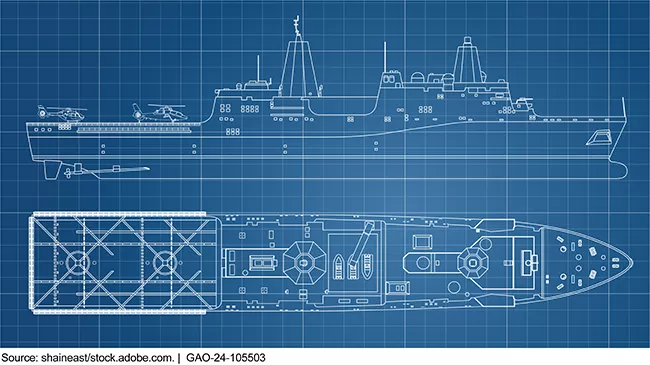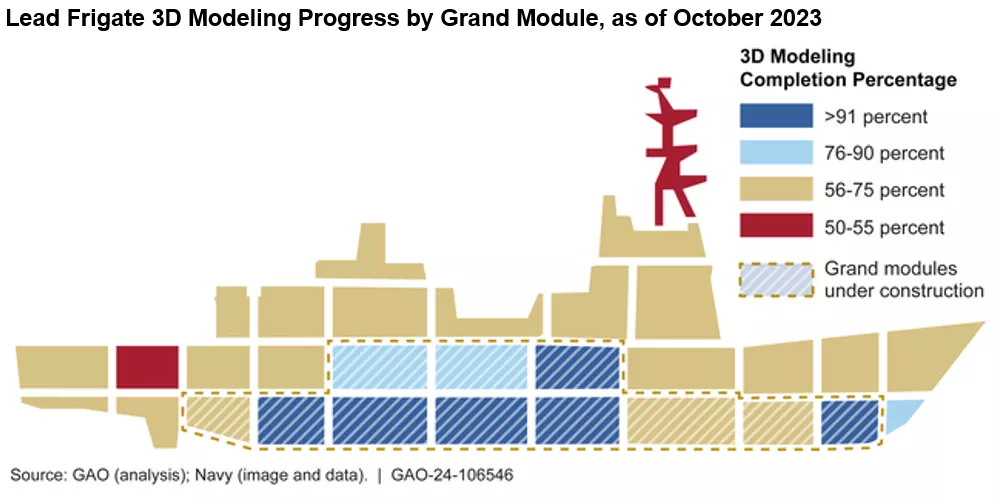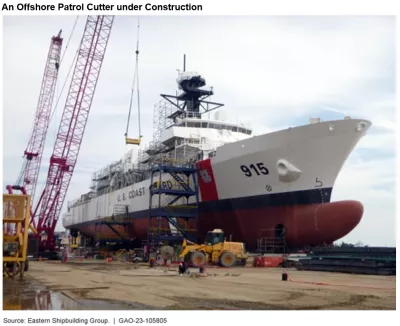The Navy and Coast Guard Face a Rising Tide of Issues in Shipbuilding
Rapidly growing maritime threats compel the Navy to deliver ships faster. And the Coast Guard needs to replace its outdated fleet to avoid gaps in its ability to carry out critical missions, like search and rescue.
But both the Navy’s and Coast Guard’s shipbuilding efforts have persistently fallen behind schedule and gone billions of dollars over budget. Plus, the design and construction processes can take so long that the ships they deliver are often equipped to face outdated threats.
How can the Navy and the Coast Guard improve their ability to design and deliver affordable, capable new ships with speed? Today’s WatchBlog post explores our recent work.
Image

Starting construction before finishing design increased costs, delays
Leading shipbuilding practices dictate design should be finished before construction begins. But in our work, we’ve found that both the Navy and the Coast Guard often haven’t done this—resulting in increased costs and delays in delivering ships to the fleet.
The Navy. Over the last decade, the Navy has sought to acquire a new class of frigate (a small warship) quickly. The frigate is meant to replace the Littoral Combat Ship, which has seen years of performance shortfalls and cost growth. The shortcomings of the Littoral Combat Ship, coupled with evolving threats, prompted the Navy to streamline its shipbuilding approach and try to acquire frigates as quickly as possible.
But in May, we found that the Navy made a key misstep by not completing design of the frigate before beginning construction. Design remained unfinished over a year after construction began.
Image

Design delays led to construction delays. Now, construction on the first ship is at a standstill and the Navy says it will be delivered 3 years late. Yet the Navy is buying frigates at the same pace it planned to years ago—before all the design and construction problems showed up. And it recently awarded contracts for two more frigates, despite ongoing concerns raised by GAO and Congress about the program.
The Coast Guard. The Coast Guard made similar mistakes when trying to acquire its Offshore Patrol Cutters, a program it deems among its highest priorities.
The Offshore Patrol Cutter would be used to conduct missions in offshore waters, such as search and rescue. In May, GAO’s Shelby Oakley testified that the Cutter program also started to build the ship while still designing it. This risky approach delayed delivery of the lead ship by almost 4 years. The Coast Guard will likely need to keep its aging cutters in service longer at a projected cost of $250 million.
Image

Lack of oversight contributed to construction delays
Both Navy and Coast Guard programs also suffered from subpar oversight.
For the Navy, you might be wondering why the frigate was approved to begin construction with an incomplete design. The Navy used a flawed metric to assess and report design completion. The metric overstated the completeness of the lead ship’s design. As a result, the Navy approved the start of construction before it was ready.
For the Coast Guard, both the Offshore Patrol Cutter and another high-priority program were missing key milestones, like ship delivery dates, in their acquisition documentation. These dates are meant to ensure program oversight and accountability and can trigger formal reviews if not met.
We have recommended that the Navy and Coast Guard take steps to resolve these issues.
What should the Navy and Coast Guard do moving forward?
The Navy and Coast Guard should look to leading commercial ship buyers and builders for innovative ways to design and deliver ships quickly. These companies take their time during ship design. This approach allows them to build and deliver new ships in a shorter, more predictable time frame.
We recommended that the Navy use these and other leading practices in its shipbuilding efforts.
Many of the design and schedule challenges that confront the Navy can also be seen in the Coast Guard’s efforts. GAO’s Shelby Oakley testified about these similarities during a congressional hearing in May. Watch her opening statement below.
Going forward, the Coast Guard also has the opportunity to use leading practices—such as having a stable design before building. The Coast Guard could apply these practices to shipbuilding efforts that are planned but haven’t yet begun, such as the Great Lakes and Arctic icebreakers.
- GAO’s fact-based, nonpartisan information helps Congress and federal agencies improve government. The WatchBlog lets us contextualize GAO’s work a little more for the public. Check out more of our posts at GAO.gov/blog.
- Have a question? Email us at blog@gao.gov.





